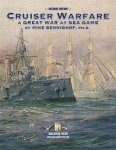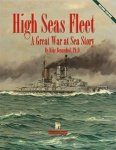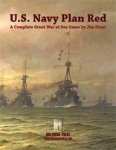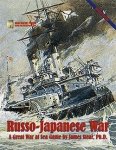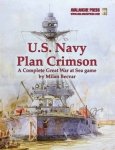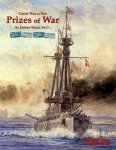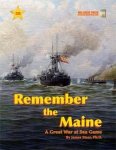-
Załączniki bezpieczeństwa
Załczniki do produktuZałączniki dotyczące bezpieczeństwa produktu zawierają informacje o opakowaniu produktu i mogą dostarczać kluczowych informacji dotyczących bezpieczeństwa konkretnego produktu
-
Informacje o producencie
Informacje o producencieInformacje dotyczące produktu obejmują adres i powiązane dane producenta produktu.Avalanche Press
-
Osoba odpowiedzialna w UE
Osoba odpowiedzialna w UEPodmiot gospodarczy z siedzibą w UE zapewniający zgodność produktu z wymaganymi przepisami.
During the brief period between 1906 and 1914, so the story goes, Britain and Germany engaged in a furious naval arms race sparked by the launch of the Royal Navy’s revolutionary battleship Dreadnought. This rivalry, egged on in Germany by Grand Admiral Alfred von Tirpitz, then helped ignite the First World War.
As usual, reality is a little more complicated than popular history. Tirpitz’s enemy lay not across the North Sea but rather just on the other side of the Brandenburger Tor in the War Ministry offices. Army and Navy battled furiously for funding, inventing respectively the (possibly mythical) Schlieffen Plan and the Risk Theory (less mythical, but just as detached from reality) to justify ever-higher levels of spending. In the event, neither got what they wanted: the Navy did not build a new class of dreadnoughts every fiscal year, nor did the Army get to muster two dozen new divisions to “reinforce the right.”
But what if Tirpitz had won his real battle? Germany had the financial and industrial resources to build a fleet to challenge the British. What might this fleet have looked like, and how would it have stood up to the Grand Fleet in battle?
Risk Fleet studies this question with background essays, 45 new scenarios, and 70 new silky-smooth die-cut playing pieces. It is not playable by itself; you’ll need our Jutland game (and only our Jutland game) to play the scenarios. You can, of course, just read the essays and fondle the pieces without owning Jutland. We won’t tell.
This is a thoroughly revised version of the former editions, with a new set of pieces with artwork that takes full advantage of the crisp resolution now available to us. And many new ships, like the 1905 fast armored cruiser proposed by Kaiser Wilhelm himself, the enlarged versions of the battle cruisers Lion and Derfflinger proposed by naval architects on either side of the North Sea, German battleships designed but never built like the 1904 semi-dreadnought, the 1905 dreadnought, the 1912 dreadnought with 13.8-inch main guns, and the repeat Baden class super-dreadnoughts. Plus more cruisers and battleships to fill out the classes of the German program, and the full Blücher class of six armored cruisers.
This is a powerful fleet that can stand toe-to-toe with the British Grand Fleet – the fleet of which the propagandists boasted but Tirpitz feared to actually build. Now you can lead it into battle.
Note: This book was formerly to be titled High Seas Fleet Third Edition.
Links:
• Publisher’s Preview
• German Dreadnoughts




